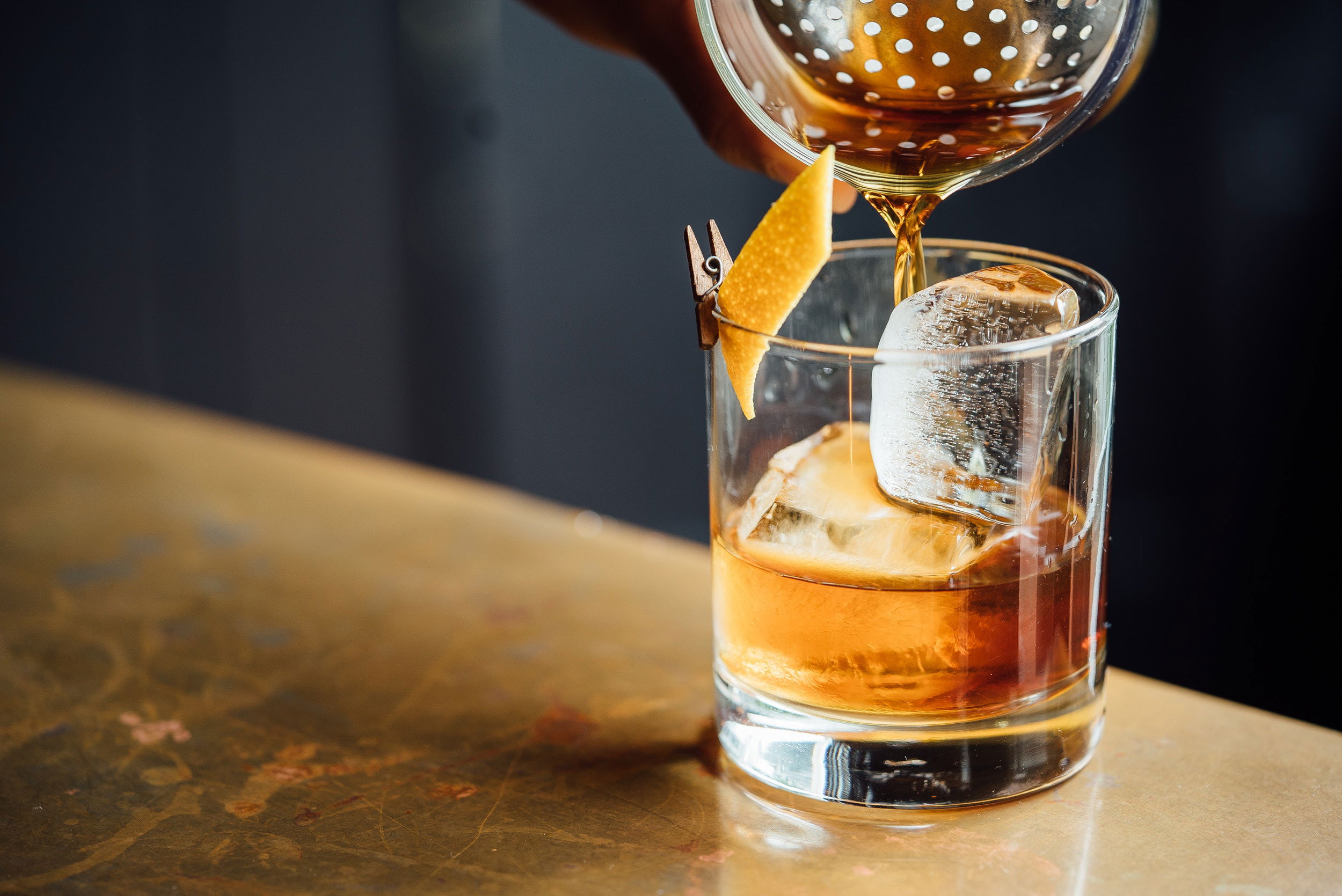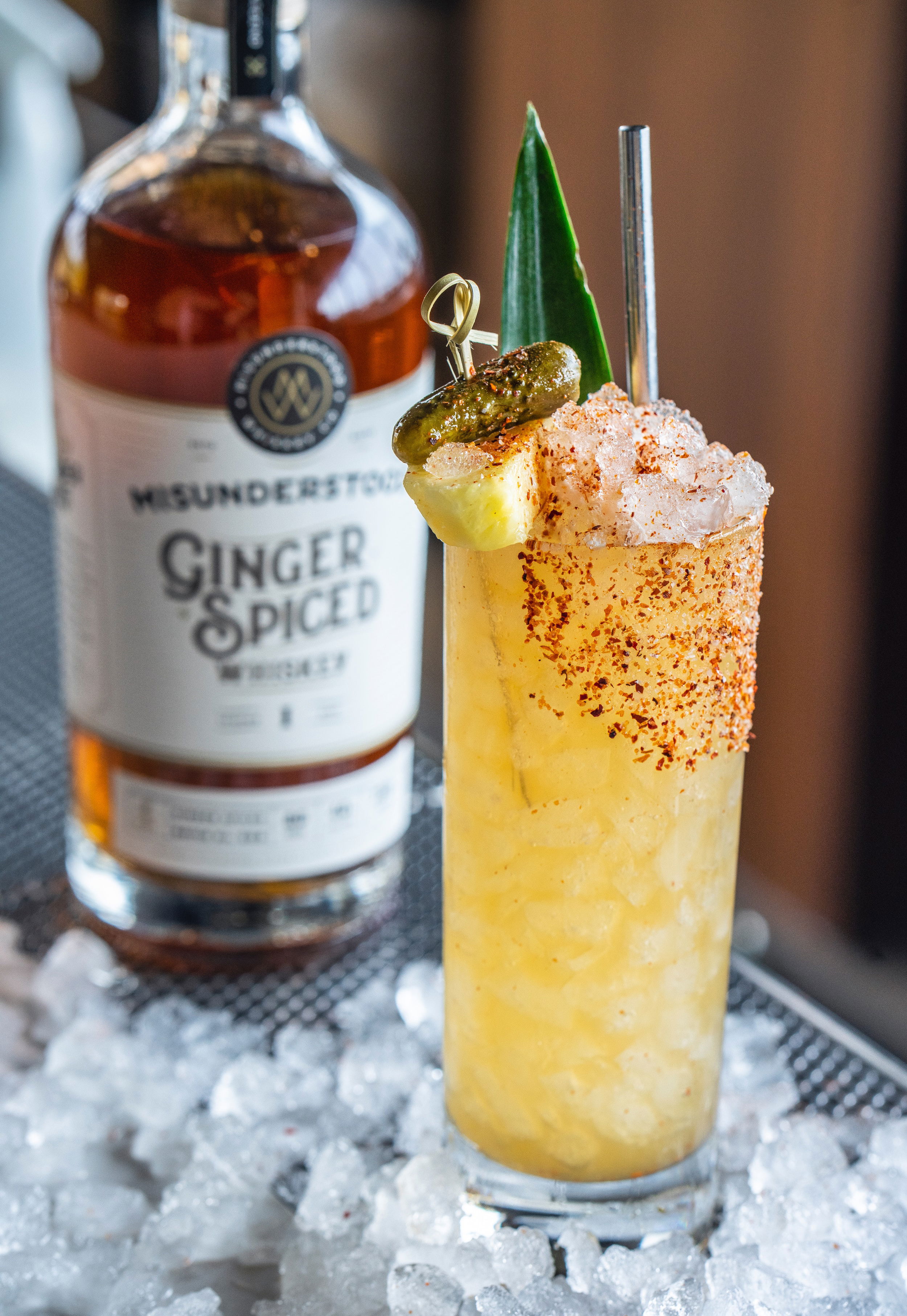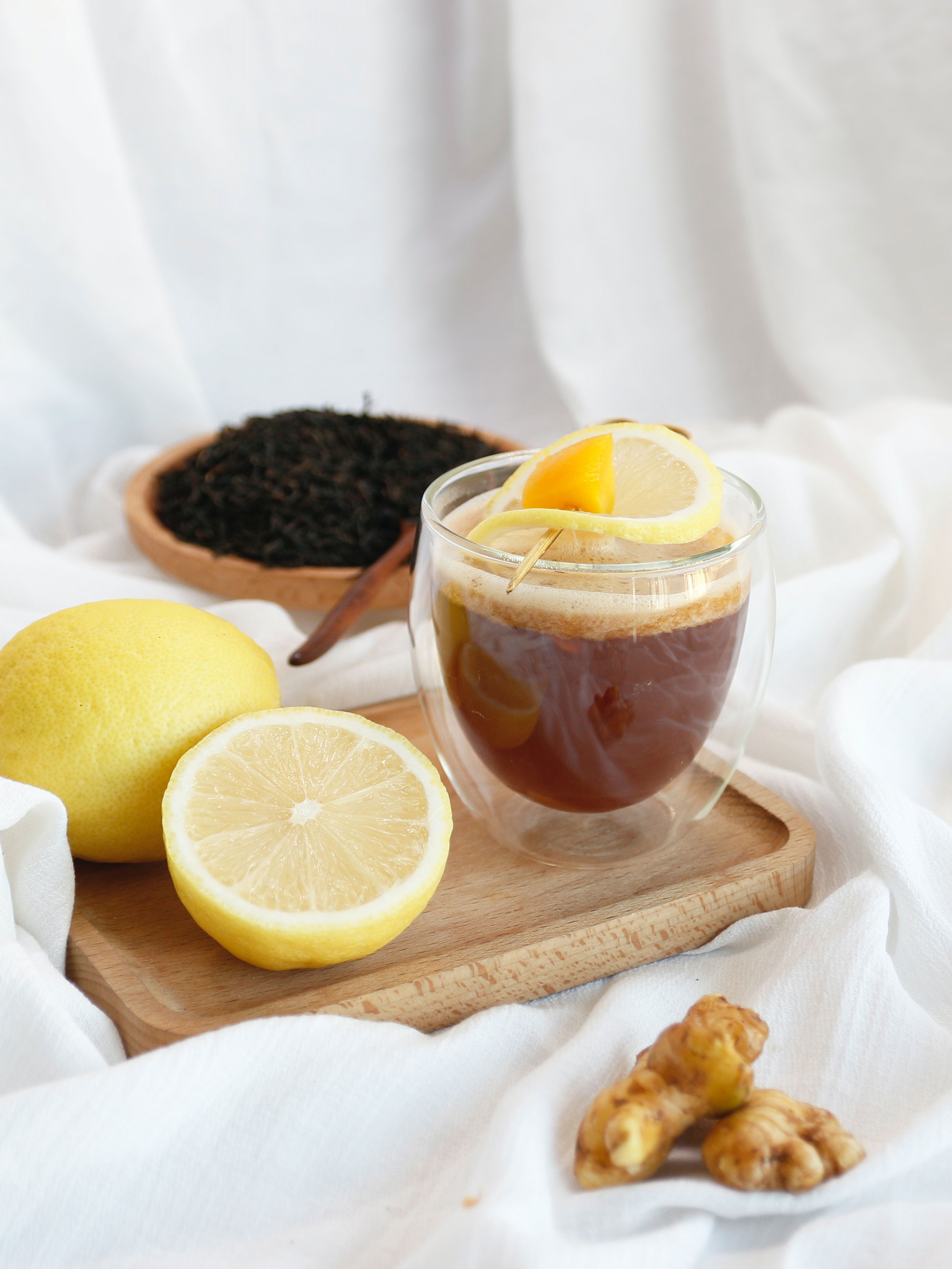Ginger in Cocktails: Delicious and Unique Drink Recipes

Ginger is a versatile ingredient that can be used in a variety of ways, from cooking savory dishes to creating sweet and spicy desserts. It has also been used for its medicinal properties for centuries. With its unique flavor and aroma, ginger can be incorporated into cocktails and refreshing drinks, making it a popular ingredient in bars and cafes.
In addition, ginger can also be used in DIY beauty products, bringing its benefits to the skin and hair.
This article will explore creative ways to use fresh ginger, including tea, cooking, cocktails, desserts, beauty products, and tips for growing and storing ginger.
1. Introduction to Ginger: A Versatile Ingredient
- What is Ginger?
Ginger is a flowering plant that belongs to the family Zingiberaceae. It is native to Southeast Asia and has been used for centuries in both cooking and medicine. Ginger is known for its pungent taste and aroma.
- Ginger's Cultural and Culinary Significance
Ginger has a rich cultural significance in many parts of the world. In Asia, it is used in traditional medicine and is also a popular ingredient in cooking, especially in Indian and Vietnamese cuisines. In Western cuisine, ginger is often used in desserts and baked goods.
- Nutritional Value of Ginger
Ginger is packed with nutrients and bioactive compounds that have several health benefits. It is a good source of vitamin B6, magnesium, potassium, and manganese. Ginger also has anti-inflammatory and antioxidant properties.

2. Ginger Tea: Health Benefits and Recipe Ideas
- Health Benefits of Ginger Tea
Ginger tea has several health benefits, including relieving nausea, reducing inflammation, and improving digestion. It may also help with weight loss and lower blood sugar levels.
- Basic Ginger Tea Recipe
To make basic ginger tea, peel and slice a piece of ginger root. Bring water to a boil and add the ginger slices. Let it simmer for about 10 minutes. Strain the tea and add honey or lemon juice to taste.
- Variations of Ginger Tea
There are several variations of ginger tea that you can try, including adding mint leaves, cinnamon, turmeric, or black pepper for extra flavor and health benefits.

3. Cooking with Ginger: Adding Flavor to Your Dishes
- Different Forms of Ginger for Cooking
Fresh ginger is the most common form of ginger used in cooking. However, you can also use dried ginger powder, pickled ginger, or ginger paste.
- Basic Cooking Techniques with Ginger
To use fresh ginger in cooking, peel and grate the ginger root. You can sauté or stir-fry it with vegetables or meat for a quick and easy flavor boost. Ginger can also be added to soups, stews, and marinades to add depth of flavor.
- Ginger Recipes for Vegetarian and Non-Vegetarian Dishes
For vegetarian dishes, try adding ginger to stir-fried vegetables or in a flavorful curry. For non-vegetarian dishes, ginger pairs well with chicken and seafood. You can also add ginger to meat marinades for a unique and delicious flavor.

4. Ginger in Cocktails: Delicious and Unique Drink Recipes
- Basic Ginger Cocktails and their Ingredients
Some popular ginger cocktails include the Moscow Mule, Dark and Stormy, and Ginger Margarita. These cocktails typically contain ginger beer, lime juice, and a spirit of your choice.
- Ginger Mocktail Recipes
Ginger can also be used in non-alcoholic drinks. Try making a ginger lemonade or a ginger ale mocktail for a refreshing and zesty drink.
- Ginger Beer and its Uses in Cocktails
Ginger beer is a non-alcoholic carbonated beverage made with ginger, sugar, and other ingredients. It is commonly used in cocktails like the Moscow Mule and Dark and Stormy. You can also enjoy ginger beer on its own as a flavorful and spicy soda.

5. Ginger for Desserts: Sweet and Spicy Treats to Try
Ginger is an incredibly versatile ingredient that can be added to a wide range of desserts for a sweet and spicy kick. From classic gingerbread to international delicacies, here are some popular ginger desserts from around the world that you should try.
- Popular Ginger Desserts around the World
- Gingerbread: A classic German dessert made with ginger, cinnamon, nutmeg, and honey or molasses.
- Ginger Snaps: A crispy cookie that originated in Sweden, often flavored with ginger, cinnamon, and cloves.
- Ginger Muffins: A quick and easy breakfast or snack option that can be made with fresh ginger or ground ginger powder.
- Candied Ginger: An Asian delicacy where fresh ginger is sliced, boiled in syrup, and coated in sugar for a sweet and spicy treat.
- Ginger Ice Cream: A refreshing dessert made with fresh ginger, cream, sugar, and eggs.
- Ginger Cake: A British dessert made with ginger, brown sugar, and golden syrup, often served with whipped cream or vanilla ice cream.
- Ginger Dessert Recipes
Try out these creative ginger dessert recipes to add some spice to your sweet treats:
- Gingerbread Cheesecake Bars: A delicious combination of creamy cheesecake and spicy gingerbread crust.
- Ginger Peach Cobbler: A summer favorite that pairs juicy peaches with spicy ginger and cinnamon.
- Ginger Molasses Cookies: Soft and chewy cookies made with fresh ginger and molasses, perfect for the holiday season.
- Ginger Chocolate Truffles: Creamy chocolate truffles with a surprise burst of ginger and spices.
- Ginger Rice Pudding: A comforting dessert that combines creamy rice pudding with spicy ginger and cinnamon.
- Adding Ginger to Classic Desserts
You can also experiment with adding ginger to your favorite classic desserts to give them a unique twist. Try adding fresh ginger to apple pie filling, pumpkin pie spice mix, or chocolate brownie batter for an extra kick of flavor. Ginger can also be added to fruit salads, whipped cream, or cheesecake topping for a touch of spice.

6. DIY Ginger Beauty Products: Using Ginger for Your Skin and Hair
Apart from being a delicious and versatile ingredient in the kitchen, ginger also has numerous benefits for your skin and hair. Here are some ways you can use fresh ginger to create your own DIY beauty products.
- Skin and Hair Benefits of Ginger
- Anti-inflammatory: Ginger has anti-inflammatory properties that can help reduce redness and irritation on the skin.
- Antioxidant: The antioxidants in ginger can help protect skin cells from damage caused by free radicals.
- Stimulates blood flow: Ginger contains compounds that can improve circulation and blood flow to the scalp, promoting hair growth.
- Anti-dandruff: Ginger has natural antifungal properties that can help reduce the buildup of dandruff on the scalp.
- Uplifting aroma: The spicy, warm aroma of ginger can be uplifting and energizing, making it a great addition to body scrubs and lotions.
- Homemade Ginger Beauty Products
- Ginger Hair Mask: Mix grated fresh ginger with coconut oil and apply the mixture to your scalp, leaving it on for 30 minutes before washing out.
- Ginger Body Scrub: Mix fresh grated ginger with sugar and coconut oil to create a natural exfoliating scrub.
- Ginger Face Mask: Mix grated fresh ginger with honey and yogurt to create a soothing and hydrating face mask.
- Ginger Hair Rinse: Boil fresh ginger slices in water, strain, and use the water as a hair rinse after shampooing.
- How to Incorporate Ginger into Your Beauty Routine
You can incorporate ginger into your beauty routine by using ginger-infused products like shampoos, conditioners, and body washes. You can also add fresh grated ginger to your DIY beauty recipes or create your own by mixing ginger with other natural ingredients like honey, lemon, or oatmeal.

7. Growing and Storing Ginger: Tips and Tricks for Freshness
If you want to use fresh ginger in your cooking or beauty routine, it's important to know how to store it properly and even grow it yourself. Here are some tips for growing and storing ginger.
- Growing Ginger: From Planting to Harvesting
- Choose a ginger root that is plump and has several "fingers" or growth buds.
- Plant the ginger root in a pot with well-draining soil, keeping it moist but not too wet.
- Ginger will thrive in a warm, humid environment, so keep it in a sunny area with high humidity.
- After several months, the ginger will have grown roots and leaves. Harvest it by pulling up the entire plant and cutting off the desired amount of ginger root.
- Storing Ginger: Keeping it Fresh and Flavorful
- Store fresh ginger in the refrigerator in a plastic bag or wrapped in paper towels.
- If you want to store ginger for a longer period, you can freeze it by peeling and chopping it into small pieces and storing them in a freezer-safe container.
- You can also preserve ginger by pickling it in vinegar or saltwater.
- Best Places to Source Fresh Ginger
You can find fresh ginger at most grocery stores and farmers' markets. Look for ginger that is firm and has smooth skin, with no wrinkles or soft spots. You can also order fresh ginger online from specialty spice shops or organic grocery stores.

8. Conclusion: Incorporating Ginger into Your Lifestyle
From cooking and baking to skincare and gardening, ginger offers a range of benefits and possibilities. Incorporating ginger into your daily life can be easy and fun, so why not try out some of the tips and recipes shared in this article? Whether you add ginger to your tea, desserts, or beauty routine, you're sure to enjoy its unique flavor and benefits.
Incorporating fresh ginger into your daily routine can add a burst of flavor and a host of health benefits. Whether it's in a steaming cup of ginger tea, a spicy stir-fry, or a refreshing ginger cocktail, there are plenty of ways to get creative with this versatile ingredient. From the kitchen to the bar to your beauty routine, ginger is a staple that you won't want to be without.
FAQs
1. Is fresh ginger better than dried ginger?
Yes, fresh ginger has a more robust flavor whereas dried ginger is less intense. Fresh ginger also has more nutritional value than dried ginger.
2. Can I use ginger in savory dishes only?
No, ginger can be used in a variety of sweet and savory dishes. It can be used to add flavor to desserts, baked goods, and even beverages.
3. Can I grow ginger at home?
Yes, ginger can be grown in a pot at home. It requires a warm and humid environment and takes around 8 to 10 months to grow. Ginger can also be propagated from a piece of fresh ginger root.
4. Is it possible to use ginger in my beauty routine?
Yes, ginger has several beauty benefits. It can be used in DIY face masks, hair masks, and scrubs. Ginger's anti-inflammatory properties can help reduce inflammation and redness in the skin, while its antioxidant properties can help protect against free radical damage.
